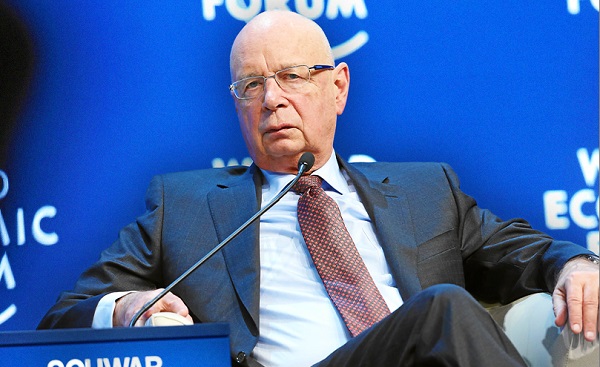Great Reset
A One-Stop Shop for Illegal Migration Reveals Ongoing Plans for Illegal Immigration

From the Center for Immigration Studies
By Todd Bensman
UN/NGO ‘mall’ under construction in southern Mexico shows they expect continued illegal flow to the U.S.
A 75,000-square-foot mega-mall, built to enable industrial-scale illegal immigration to the U.S. southern border, is almost online here in this key entry city in southern Mexico just across the border from Guatemala.
Scheduled to open in December, the mall suggests that powerful global agencies, the United Nations key among them, are bullish on a long-term future of continued heavy U.S.-bound illegal migrant traffic through Mexico – no matter the outcome of the November 5 American presidential election.
Those bullish investors are the dozens of migration-oriented UN agencies and non-governmental organizations (NGOs) that have already plowed hundreds of millions of dollars of U.S. taxpayer money into constructing a permanent network of way stations for thousands of miles along the migration routes from South America to the U.S. border during the four years of the Biden-Harris administration.

A Nicaraguan on his way to the U.S. showed his UN cash card in Monterrey, Mexico. January 2023 photo by Todd Bensman.
The record hundreds of millions of dollars in aid is distributed at the way station network in the form of cash cards, cash in envelopes, food, vouchers for onward travel and lodging, medical treatment, pharmaceuticals, legal counseling, and much more. (See: “UN Budgets Millions for U.S.-Bound Migrants in 2024”.) This aid has without doubt helped the UN and its growing constellation of NGOs keep the masses moving north through Tapachula in record numbers toward irresistible Biden border policies that have welcomed across arrivals in historic millions. (See: “Biden Admin. Sends Millions to Religious Nonprofits Facilitating Mass Illegal Migration”.)
The UN and NGOs are betting on a busy future in Mexico. Going forward, the purpose of this one strategically located facility is to “respond comprehensively to the needs of people who arrive in Mexico … migrant refugees who travel together from all continents, and arrive in Tapachula in need of a response or attention”, Giovanni Lepri, the Mexico representative for the United Nations High Commission on Refugees (UNHCR), told reporters when Mexico’s foreign ministry announced it in April 2024.
But the Tapachula mall represents a far more expansive billion-dollar migration-route safety net constructed during the Biden-Harris years using record-breaking U.S. taxpayer contributions.
It plugs into two other big one-stop-migration malls erected in the northern Mexico cities of Monterrey and Tijuana. These gleaming new Mexican facilities, and plenty of other UN and NGO substations in Mexican towns and cities, form the final terminus of the trails to the United States lined with pots of U.S. taxpayer money. And they are representative of what’s happening throughout Latin America.
The UN High Commissioner for Refugees (UNHCR), which received $1.9 billion in U.S. taxpayer funds in 2024 and $2.1 billion in 2023 (compared to $377 million in 2019) for migration assistance throughout Latin America, started building the Tapachula facility on land donated by Chiapas State as part of the deal with Mexico to run it.
The UNHCR, UN’s International Organization for Migration (IOM), UNICEF, and dozens of private, often religion-based, NGOs scattered around Tapachula will work alongside one another under one massive roof here — evidently planning a years-long collaboration.
None of the UN/NGO pots of gold are exactly a secret but are relatively hard to find for the uninitiated. And harder to grasp as connected to domestic American policies or as a legitimate point of political debate.
The UN’s 2024 update to the “Regional Refugee and Migrant Response Plan” (RMRP for short), a UNHCR and IOM planning and budget document, lays out in detail that it planned to hand out nearly $1.6 billion in 17 Latin America countries using its network of 248 different NGOs. (For the complete list of involved groups, see p. 268, here, and explore their activities further with this interactive tool).
That was on top of the 2023-2024 RMRP plan, which called for 228 NGOs (all listed on p. 268 of the list of involved groups) to spend $1.72 billion on trailside assistance to mass migration that all know will illegally pass through many countries and, finally, breach the U.S. border.
Hundreds of millions of dollars for all of this comes straight from U.S. taxpayers in the form of sharply increased US State Department bequeathals, USAID grants, and flexible spending contributions to the UNHCR and IOM.
Too Far for Average Americans to See

Necocli, Columbia to Acandi, Panama
For an idea of how U.S. tax money is spent to flood the American border, the far northwest Colombian town of Necocli provides a window. This is a major staging town for migrants preparing to boat across the Gulf of Uraba for smuggler-guided backpack trips through the so-called “Darien Gap” jungle passage that leads into Panama and eventually Mexico.
In Necocli, the UN and NGO agencies have arrayed themselves in something like an outdoor swap meet of NGO booths and an IOM mobile bus office on a few acres next to the gulf beach, the Center for Immigration Studies observed during an August 2024 research trip to the region. The Jewish NGO Cadena was set up in a booth next to the Adventist Development and Relief Agency (ADRA).
NGO and UN workers there said they provide a variety of trail advice — and plenty of supplies to the immigrants, to include socks, underwear, backpacks, bug repellant, water filters, sunscreen, and Vaseline.
And food.
“Like things easy to carry so they can eat and be done with it,” a Cadena worker said.
ADRA provides children’s classes thrice weekly on how to avoid sexual predators among the strange men traveling the Darien Gap.
On this day, a Cadena worker said she’d given out thousands of food items such as packaged soup to more than 3,000 migrants during the previous few months, showing the last of it: a box with a handful of granola bars she hoped to hand out soon so she could go home.
What about critics who say NGOs like Cadena are helping migrants break the laws of many countries?

A Cadena NGO worker in Necocli, Colombia. August 2024 photo by Todd Bensman.
“As an organization,” the Cadena worker responded. “We’re not here to judge. We’re just here to provide a service.”
”But aren’t you helping them migrate?”
“Only by giving them the things that I mentioned, not money or fare, just certain resources for the trip,” she explained.
UNHCR workers carrying iPads interacted with groups of migrants sitting in chairs under open-air shelters, surveying them and their needs for the trail ahead. The IOM workers hand out hygiene kits to women, but had run out of the kits some days earlier.
Across the Uraba Gulf in the staging town of Acandi, the Clan del Gulfo paramilitary controls the human smuggling operations into the Darien Gap. The cartel runs two migrant camps where the migrants are brought for final journey preparations.
The center gained permission to access one of the camps, “Camp 1”. Inside, the Center found NGOs providing medical services, legal counseling, and food.
Furthermore, Colombian banks also have been allowed to set up a money-wiring service so that migrants could pay their foot guides.
All involved could not possibly be unaware that the people they are assisting intend to break the immigration laws of a half dozen countries up trail, including, ultimately, illegally breaching the American border.
A Bright Future for Mass Migration?
The UN and NGO’s migration advocacy industrial complex is now preparing its 2025-2026 plan for the trails of Latin America.
A request for input from its NGO partners suggests an ambitious coming year of providing “cash and voucher assistance”, “food security”, “humanitarian transportation”, “shelter”, and most other basic human needs.
Who will be the recipients?
Refugees and migrants in-transit (of all nationalities) who cross an international border.
International
New York Times publishes chilling new justification for assisted suicide

From LifeSiteNews
Even happy, healthy lives without major issues can warrant needless ending if they are ‘complete.’
Notorious secular “ethicist” Peter Singer has co-authored an opinion piece in The New York Times positing a chilling new rationale for assisted suicide: the determination that one’s life is simply “complete.”
Princeton psychologist Daniel Kahneman died in March 2024 at age 90. His cause of death was not disclosed at the time, but a year later, The Wall Street Journal revealed that Kahneman had emailed friends the day before to tell them he was traveling to Switzerland to avail himself of the country’s legal physician-assisted suicide.
“I think Danny wanted, above all, to avoid a long decline, to go out on his terms, to own his own death,” WSJ journalist and longtime friend of the deceased Jason Zweig wrote. “Maybe the principles of good decision-making that he had so long espoused — rely on data, don’t trust most intuitions, view the evidence in the broadest possible perspective — had little to do with his decision.”
On April 14, The New York Times published a guest essay by the infamous Singer, a pro-infanticide Princeton bioethics professor, and philosophy professor Katarzyna de Lazari-Radek, who shared that they too knew of Kahneman’s plans and that days before he had told them, “I feel I’ve lived my life well, but it’s a feeling. I’m just reasonably happy with what I’ve done. I would say if there is an objective point of view, then I’m totally irrelevant to it. If you look at the universe and the complexity of the universe, what I do with my day cannot be relevant.”
“I have believed since I was a teenager that the miseries and indignities of the last years of life are superfluous, and I am acting on that belief,” Kahneman reportedly said. “I am still active, enjoying many things in life (except the daily news) and will die a happy man. But my kidneys are on their last legs, the frequency of mental lapses is increasing, and I am 90 years old. It is time to go.”
Singer and de Lazari-Radek argued that this was an eminently reasonable conclusion. “(I)f, after careful reflection, you decide that your life is complete and remain firmly of that view for some time, you are the best judge of what is good for you,” they wrote. “This is especially clear in the case of people who are at an age at which they cannot hope for improvement in their quality of life.”
“(I)f we are to live well to the end, we need to be able to freely discuss when a life is complete, without shame or taboo,” the authors added. “Such a discussion may help people to know what they really want. We may regret their decisions, but we should respect their choices and allow them to end their lives with dignity.”
Pro-lifers have long warned that the euthanasia movement devalues life and preys on the ill and distraught by making serious medical issues (even non-terminal ones) into grounds to end one’s life. But Singer and de Lazari-Radek’s essay marks a new extreme beyond that point by asserting that even happy, healthy lives without major issues can warrant needless ending.
“Instead of seeing every human life as having inherent value and dignity, Singer sees life as transactional: something you are allowed to keep by being happy, able-bodied, and productive — and something to be taken away if you are not,” Cassy Cooke wrote at Live Action News.
In America, nine states plus the District of Columbia currently allow assisted suicide. In March, Delaware took a step closer to becoming the 10th with its own legalization bill, although it has yet to become law. Another bill recently failed in Maryland.
Support is available to talk those struggling with suicidal thoughts out of ending their lives. The Suicide & Crisis Lifeline can be reached by calling or texting 988.
Business
‘Great Reset’ champion Klaus Schwab resigns from WEF

From LifeSiteNews
Schwab’s World Economic Forum became a globalist hub for population control, radical climate agenda, and transhuman ideology under his decades-long leadership.
Klaus Schwab, founder of the World Economic Forum and the face of the NGO’s elitist annual get-together in Davos, Switzerland, has resigned as chair of WEF.
Over the decades, but especially over the past several years, the WEF’s Davos annual symposium has become a lightning rod for conservative criticism due to the agendas being pushed there by the elites. As the Associated Press noted:
Widely regarded as a cheerleader for globalization, the WEF’s Davos gathering has in recent years drawn criticism from opponents on both left and right as an elitist talking shop detached from lives of ordinary people.
While WEF itself had no formal power, the annual Davos meeting brought together many of the world’s wealthiest and most influential figures, contributing to Schwab’s personal worth and influence.
Schwab’s resignation on April 20 was announced by the Geneva-based WEF on April 21, but did not indicate why the 88-year-old was resigning. “Following my recent announcement, and as I enter my 88th year, I have decided to step down from the position of Chair and as a member of the Board of Trustees, with immediate effect,” Schwab said in a brief statement. He gave no indication of what he plans to do next.
Schwab founded the World Economic Forum – originally the European Management Forum – in 1971, and its initial mission was to assist European business leaders in competing with American business and to learn from U.S. models and innovation. However, the mission soon expanded to the development of a global economic agenda.
Schwab detailed his own agenda in several books, including The Fourth Industrial Revolution (2016), in which he described the rise of a new industrial era in which technologies such artificial intelligence, gene editing, and advanced robotics would blur the lines between the digital, physical, and biological worlds. Schwab wrote:
We stand on the brink of a technological revolution that will fundamentally alter the way we live, work, and relate to one another. In its scale, scope, and complexity, the transformation will be unlike anything humankind has experienced before. We do not yet know just how it will unfold, but one thing is clear: the response to it must be integrated and comprehensive, involving all stakeholders of the global polity, from the public and private sectors to academia and civil society …
The Fourth Industrial Revolution, finally, will change not only what we do but also who we are. It will affect our identity and all the issues associated with it: our sense of privacy, our notions of ownership, our consumption patterns, the time we devote to work and leisure, and how we develop our careers, cultivate our skills, meet people, and nurture relationships. It is already changing our health and leading to a “quantified” self, and sooner than we think it may lead to human augmentation.
How? Microchips implanted into humans, for one. Schwab was a tech optimist who appeared to heartily welcome transhumanism; in a 2016 interview with France 24 discussing his book, he stated:
And then you have the microchip, which will be implanted, probably within the next ten years, first to open your car, your home, or to do your passport, your payments, and then it will be in your body to monitor your health.
In 2020, mere months into the pandemic, Schwab published COVID-19: The Great Reset, in which he detailed his view of the opportunity presented by the growing global crisis. According to Schwab, the crisis was an opportunity for a global reset that included “stakeholder capitalism,” in which corporations could integrate social and environmental goals into their operations, especially working toward “net-zero emissions” and a massive transition to green energy, and “harnessing” the Fourth Industrial Revolution, including artificial intelligence and automation.
Much of Schwab’s personal wealth came from running the World Economic Forum; as chairman, he earned an annual salary of 1 million Swiss francs (approximately $1 million USD), and the WEF was supported financially through membership fees from over 1,000 companies worldwide as well as significant contributions from organizations such as the Bill & Melinda Gates Foundation. Vice Chairman Peter Brabeck-Letmathe is now serving as interim chairman until his replacement has been selected.
-

 International2 days ago
International2 days agoPope Francis has died aged 88
-

 International2 days ago
International2 days agoJD Vance was one of the last people to meet Pope Francis
-

 2025 Federal Election1 day ago
2025 Federal Election1 day agoOttawa Confirms China interfering with 2025 federal election: Beijing Seeks to Block Joe Tay’s Election
-

 COVID-191 day ago
COVID-191 day agoNearly Half of “COVID-19 Deaths” Were Not Due to COVID-19 – Scientific Reports Journal
-

 2025 Federal Election1 day ago
2025 Federal Election1 day agoHow Canada’s Mainstream Media Lost the Public Trust
-

 Business2 days ago
Business2 days agoCanada Urgently Needs A Watchdog For Government Waste
-

 2025 Federal Election15 hours ago
2025 Federal Election15 hours agoBREAKING: THE FEDERAL BRIEF THAT SHOULD SINK CARNEY
-

 International2 days ago
International2 days agoPope Francis Dies on Day after Easter







